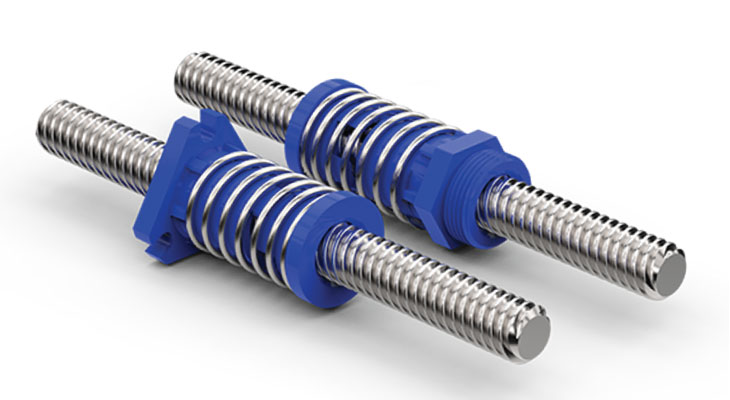Acme Screws Come in a Variety of Flavors

There are many reasons why acme screws are the preferred choice when it comes to linear motion applications. The popular trapezoidal screw with a 29-degree thread angle, which works to convert rotary motion into linear motion, boasts attractive features such as quiet operation, affordability, precision, and a reduction in regular maintenance compared to the alternatives.
Here's a closer look at some of the many flavors you have available with acme lead screws:
Acme Thread Forms: There are options within the acme thread geometry itself depending on the application, accuracy, and size constraints of your application. There are two primary varieties - general-purpose and centralizing. The general purpose acme thread is the standard 29-degree angle (40-degree angle in smaller sizes), which is available with a series of diameters and related pitches. Centralizing acme threads are characterized by their manufactured properties, as they're generally made with tighter tolerances and reduced clearance on the primary thread diameter. This type of thread reduces the chances of the nut thread wedging on the screw. Generally, the thread depth of a single start Acme screw is one-half of the pitch. Stub acme threads are characterized by their thread depth being less than standard. This results in a lower profile thread for space-constrained applications.
End Product: The application will dictate what size and "flavor" of acme screw is necessary. At Helix, we create nearly all of our screws via thread rolling. This process is fast, efficient, and produces an exact screw so that lead screws can get to you more cost-effectively and quicker than ever. In the rare case that you may need greater accuracy, we can produce milled or ground threads. Acme screws are available in standard length and cut to size, and we also offer standard and custom end machining.
Coatings: The performance of the lead screw has a lot to do with its characteristics - and this can span more than just materials and nut type. Specifically, we're talking about how a suitable coating can enhance performance. Helix uses black oxide coating on alloy screws as a standard coating to protect against corrosion. Another higher-performing coating option is PTFE, a durable fluoropolymer that provides dry film lubrication. PTFE also has excellent salt spray and abrasion resistance. Furthermore, PTFE is chemical resistant, water, and heat resistant and offers a no-stick surface. This coating can be applied to all Helix lead screws to increase the efficiency of lead screw assemblies through a reduction in the coefficient of friction.
No matter the application, there's an acme lead screw for it. As you can see, these types of screws come in many different "flavors" - all it takes is a little bit of analysis to discover which one is right for you.

